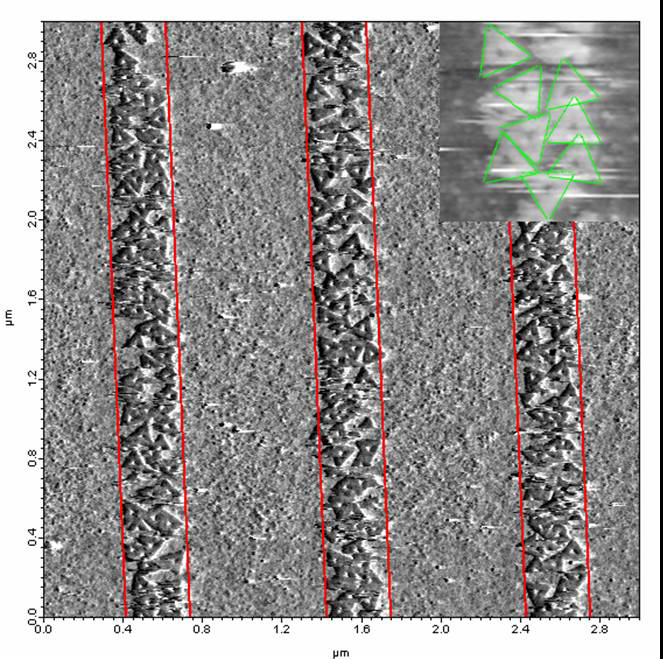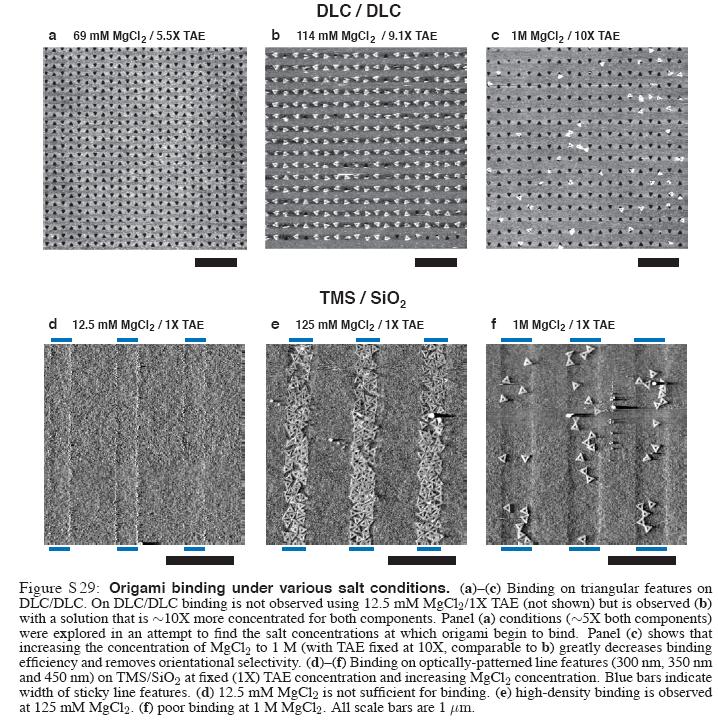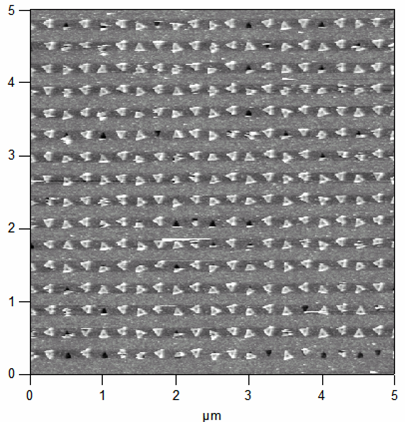Human DNA Transistor
A couple of years ago, an American biologist Paul Rotmund discovered that DNA molecules have the ability to self-assemble into various regular geometric shapes - triangles, squares, stars, etc. ( Rotmund's work in PDF ). This really interesting discovery (it was included in the list of 12 most important scientific discoveries of 2006) theoretically allows us to make something like the Lego constructor out of our DNA.

The practical implementation of such an opportunity was not long in coming.
The other day, researchers from IBM toldhow to arrange DNA molecules directly on the surface of the chip. They applied the standard lithography method, etched a stereotyped form in a silicon crystal - and filled it with a mass of "origami", that is, a bunch of DNA molecules in the shape of triangles.
The photographs show how origami fill etched grooves in the crystal.


Under certain environmental conditions, origami take an extremely ordered orientation. The photographs show the results of experiments with different concentrations of saline.


Billets of DNA molecules on a chip can theoretically be used as guides for assembling transistors and conductors from nanotubes directly on the surface of microcircuits. As is known, nanotubes are superior in all respects to silicon. The only problem is that they have not yet learned to do anything, there is no technical process. When nanotubes finally come to replace silicon, then the norm in microelectronics can be reduced from the existing 45 nm to 22 nm or even less. This means faster and cheaper microprocessors.
In general, it will be very symbolic if human DNA molecules are used in this capacity - to create a new generation of processors, which in turn can become the basis of future Artificial Intelligence. In a sense, then we will be relatives with him.
The scientific work was published in the journal in the journal Nature Nanotechnology [Placement and orientation of individual DNA shapes on lithographically patterned surfaces - Ryan J. Kershner, Luisa D. Bozano, Christine M. Micheel, Albert M. Hung, Ann R. Fornof, Jennifer N. Cha, Charles T. Rettner, Marco Bersani, Jane Frommer, Paul WK Rothemund & Gregory M. Wallraff].

The practical implementation of such an opportunity was not long in coming.
The other day, researchers from IBM toldhow to arrange DNA molecules directly on the surface of the chip. They applied the standard lithography method, etched a stereotyped form in a silicon crystal - and filled it with a mass of "origami", that is, a bunch of DNA molecules in the shape of triangles.
The photographs show how origami fill etched grooves in the crystal.


Under certain environmental conditions, origami take an extremely ordered orientation. The photographs show the results of experiments with different concentrations of saline.


Billets of DNA molecules on a chip can theoretically be used as guides for assembling transistors and conductors from nanotubes directly on the surface of microcircuits. As is known, nanotubes are superior in all respects to silicon. The only problem is that they have not yet learned to do anything, there is no technical process. When nanotubes finally come to replace silicon, then the norm in microelectronics can be reduced from the existing 45 nm to 22 nm or even less. This means faster and cheaper microprocessors.
In general, it will be very symbolic if human DNA molecules are used in this capacity - to create a new generation of processors, which in turn can become the basis of future Artificial Intelligence. In a sense, then we will be relatives with him.
The scientific work was published in the journal in the journal Nature Nanotechnology [Placement and orientation of individual DNA shapes on lithographically patterned surfaces - Ryan J. Kershner, Luisa D. Bozano, Christine M. Micheel, Albert M. Hung, Ann R. Fornof, Jennifer N. Cha, Charles T. Rettner, Marco Bersani, Jane Frommer, Paul WK Rothemund & Gregory M. Wallraff].
